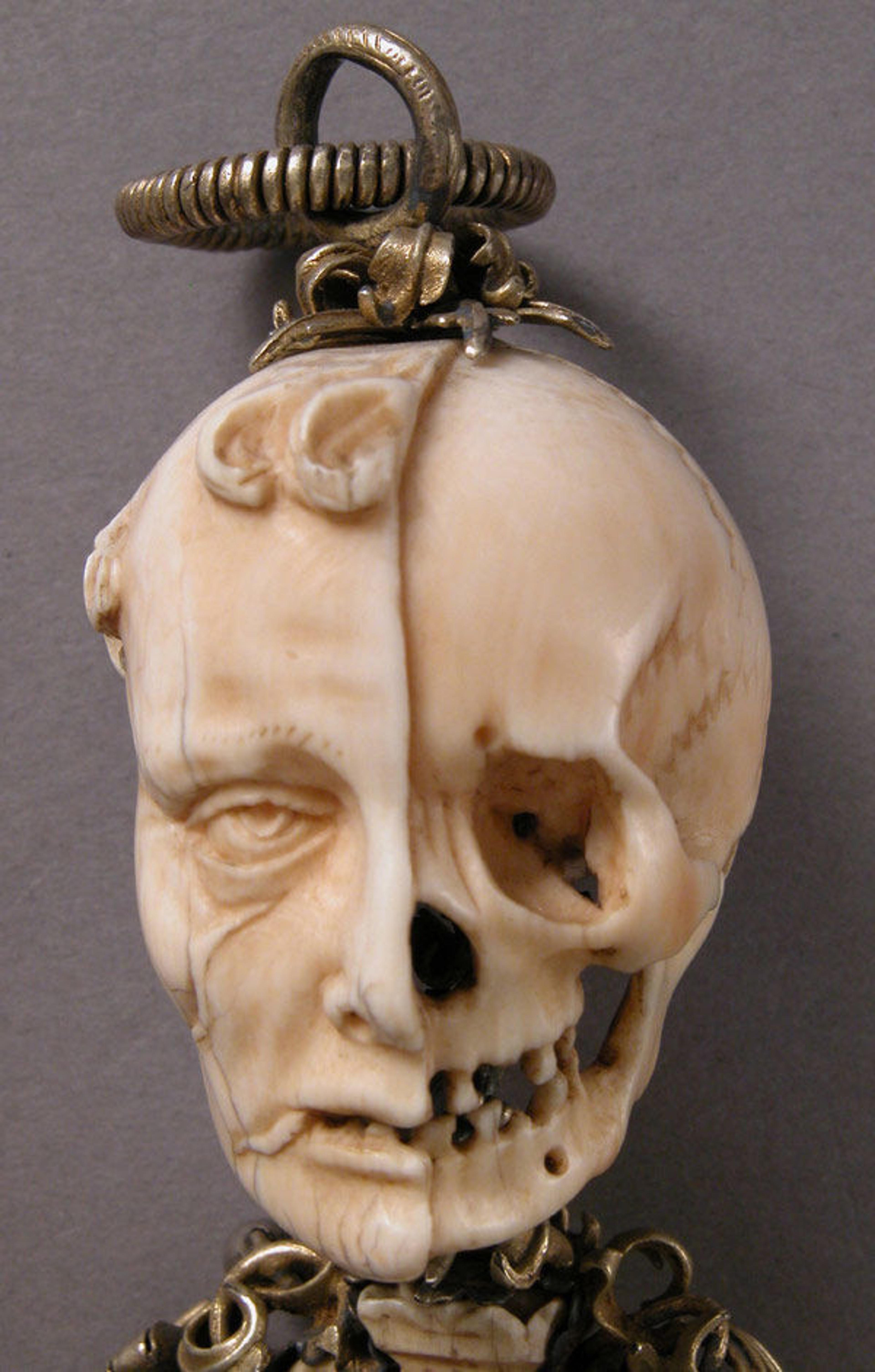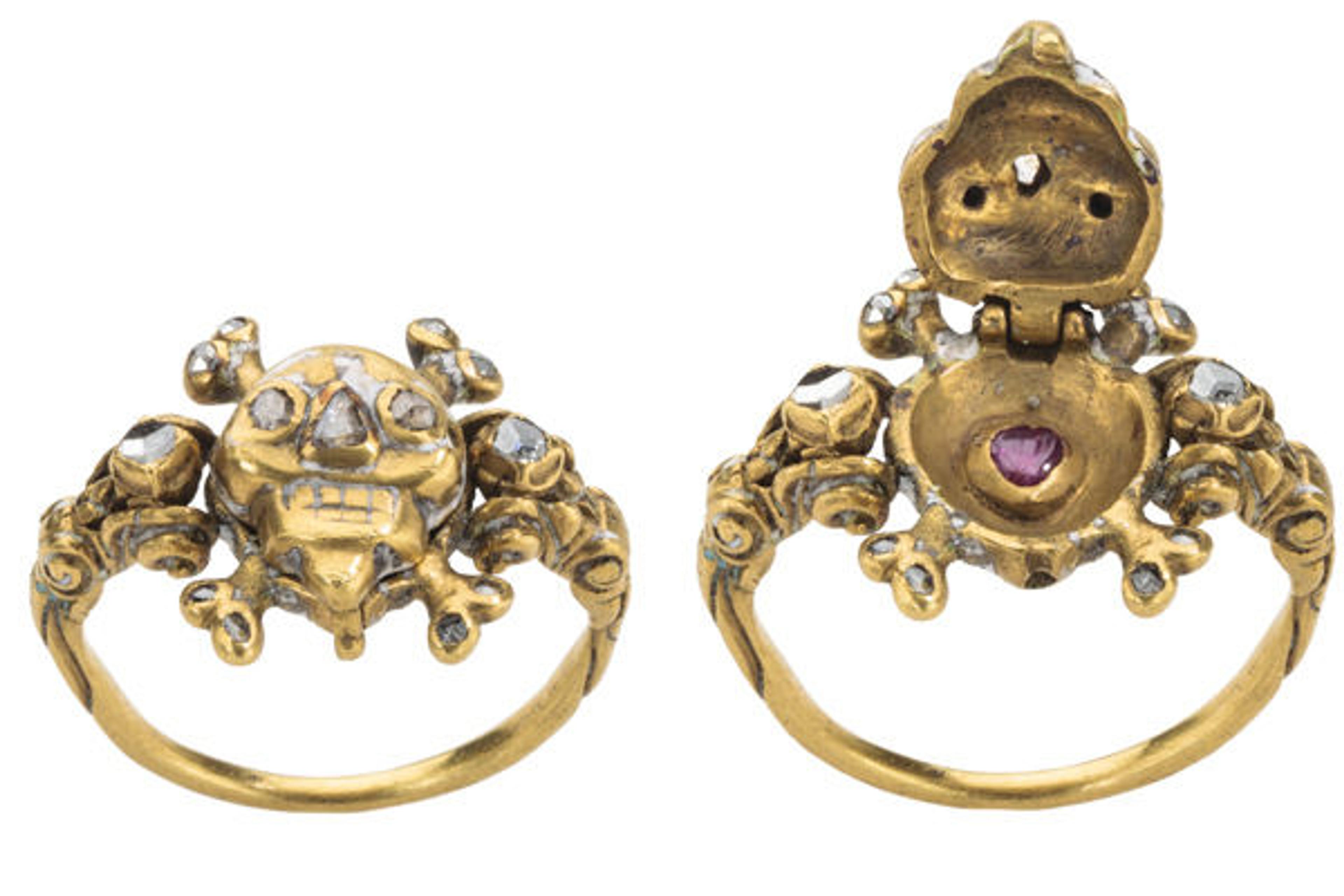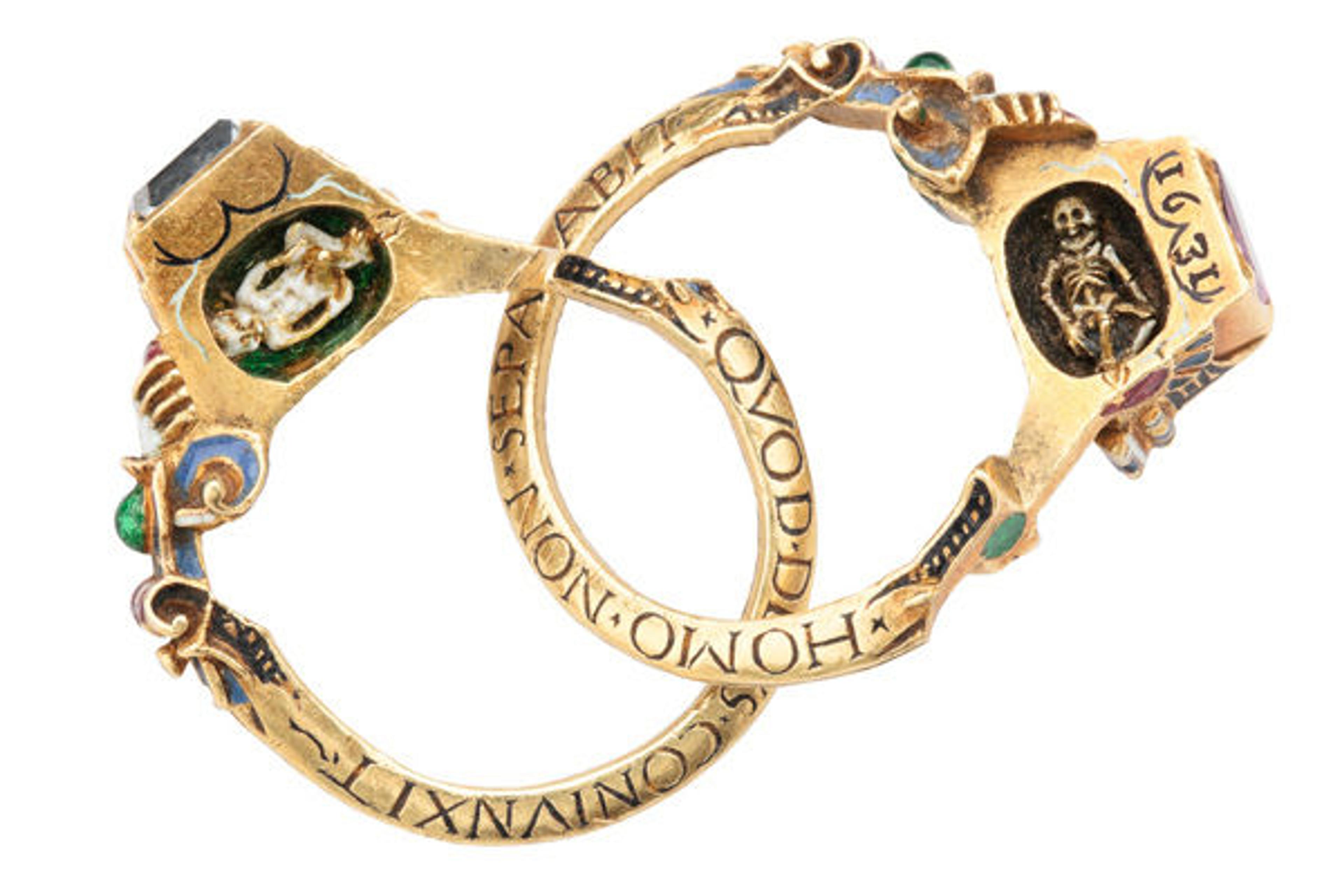Celebrating Life and Death with Rubies

Renaissance gimmel ring with memento mori, dated 1631. German. Height 29.61 mm; exterior diam. 23.7 mm; bezel 14.25 x 12.18 mm.; weight 13.75 grams US size 7.5 UK 0 1/2
«For those of you who are celebrating birthdays this month, we are featuring two especially fascinating rings from the Griffin Collection. Both incorporate rubies, which is the birthstone for July, and hidden chambers, but more on that later. First, let's consider the ruby.»
The second hardest gems after diamonds, rubies have always been prized for their color. During the Middle Ages, deep-red rubies were imported into Europe from India, Sri Lanka, and Burma. From Afghanistan, merchants brought paler, pinkish stones known as balas, or spinel rubies, which were not as prized because of their less brilliant coloration. Rubies were deemed chief among stones, and those as bright and lustrous as pomegranate flesh were especially celebrated. Their intense red color has often been associated with passion, protection, and love.
Late medieval and Renaissance lapidaries, or collections of writings on precious stones, not only described the physical properties of gems, but also ascribed to them magical powers and intrinsic virtues. Often relying on Roman and Greek sources and more recent texts, these lapidaries proclaimed that the ruby could promote health, dispel bad thoughts, serve as a defense against poison, bring concord between people, and even serve as a guard against lust. In some cases, it was thought that the stone would darken to transmit important information, like the presence of danger, to its wearer. The ruby was a rare and powerful stone, and it comes as no surprise that it appears in extraordinary jewelry.
In the current exhibition Treasures and Talismans: Rings from the Griffin Collection, two rings that feature rubies can be found among the objects associated with the concept of memento mori, which translates literally as "remember death." Memento mori jewelry emerged in the Renaissance, when goldsmiths and other artists developed moralistic images that contrasted youth and beauty with death and decay. The idea was to remind viewers that death could be right around the corner and that knowledge of its presence would incite devotion.

Rosary (detail), ca. 1500–1525. German. Ivory, silver, and partially gilded mounts; overall: 24 11/16 x 2 1/8 x 1 3/4 in. (62.7 x 5.4 x 4.5 cm); top terminal: 1 5/8 x 1 5/16 x 1 1/2 in. (4.2 x 3.4 x 3.8 cm). The Metropolitan Museum of Art, New York, Gift of J. Pierpont Morgan, 1917 (17.190.306)
One such message is delivered in haunting but sensuous detail in an ivory rosary bead, where a man's head reveals his skull, and his flesh is crawling with worms. "Remember death," it proclaims. "This is what you will be." This is pretty powerful stuff.
These juxtapositions, often rendered with terrible beauty and startling intimacy, prompted their owners to meditate on the vanity of earthly pursuits and the transient nature of human existence. While sometimes the imagery was exposed for all to see, messages were also revealed through the use of secret chambers. This is where we come back to the two rings.
The first of the two rings features a diamond-encrusted skull and crossbones on its bezel. Originally, the gold was covered in white enamel in order to make the skull and bones stand out against the hoop. The small diamonds glimmer in the light, giving the skull an eerie, engrossing quality, and flipping open the skull reveals a small, heart-shaped ruby nestled inside a secret chamber. It seems to say that love can be found even in death.

Skull memento mori locket ring gold, 17th century. British. Gold, enamel, diamonds, and ruby; weight: 11.3 g.; circumference: 59.5 mm.; size: US 9, UK R 1/2
The second ring is more complex by far, and one would never know the secrets it contains without close examination. Once owned by the Rothschild family, this spectacular ring, replete with vivid enamels, separates into two hoops, sort of like a puzzle ring.

Views of the Renaissance gimmel ring with memento mori together and apart
The bezel combines a table-cut diamond on one side with a vivid, red ruby on the other. The paired stones provide the most visible suggestion that there is more to the ring than meets the eye. When opened, the bezel reveals two hidden chambers, and a tiny gold- and white-enameled baby curls inside one cavity, while a similarly constructed skeleton nestles inside its companion.

An inside view of the Renaissance gimmel ring with memento mori, featuring a baby hidden inside one half of the ring and a skeleton in the other
These contrasting images of the beginning and end of life expose a powerful message, revealed only when the owner divided the ring. The inscription declares: "Whom God has joined together, let no man tear asunder." Here too, love and death coexist, unified in a single work of art, for this ring is not only a memento mori but also a wedding ring.
The ruby and the diamond, with their fiery depth and cold brilliance, make for an extraordinary pair. This ring, known as a gimmel after the Latin word for twin, and the skull ring make two miniature and very memorable works of art for anyone celebrating a July birthday.
C. Mann
C. Griffith Mann is the Michel David-Weill Curator in Charge of the Department of Medieval Art and The Cloisters.